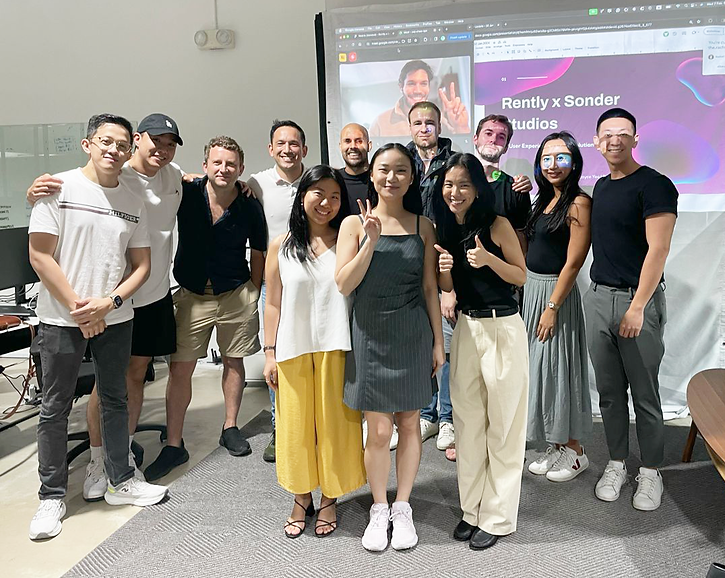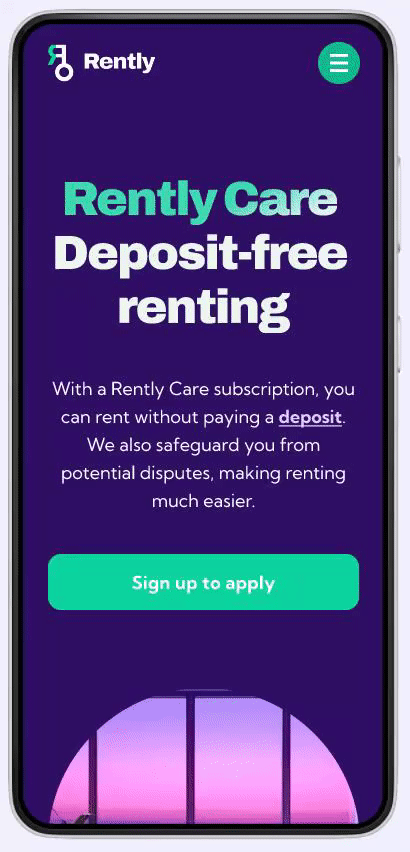
Rently
Project Overview
Client project with fintech startup
Rently is a fintech startup based in Singapore that revolutionises the property rental industry by providing a service, Rently Care, that allows tenants to rent without paying the security deposit required when renting. Their long-term vision is to become Singapore's ultimate tenant-focused rental solution, providing tenants with unparalleled end-to-end support during every step of their rental journey.
For this pro-bono client project, our project brief was to enhance the tenant’s user experience during the Rently onboarding process, with the goal of increasing user acquisition rate.
Details
Duration
3 weeks
Team
Myself, Joyce, Rachel (team of 3)
My role
-
Main point of contact between team and client
-
Conducted market research and competitive analysis
to understand rental industry -
Conducted user research to understand tenants
-
Generated digital solutions through design studios
-
Designed high-fidelity wireframes and prototypes
-
Performed usability testing on designed product
-
Iterated design based on insights gleaned
during usability testing
Tools
Figma
Research
How do I rent in Singapore?
We started our project by researching how renting in Singapore worked. We sought to understand trends related to renting and the common struggles tenants faced during the journey. We learnt about the rental programs offered by the government for its low income citizens, and how that scheme differs from renting on the open market.
While researching Singapore's non-resident population, we encountered many different terms. The words “expat” or “migrant worker” carry many connotations and assumptions about class, education and privilege. As different people have different needs, goals and experiences, we set out to understand all groups individually - this allows us to design solutions that are effective for each user group. For the purpose of this project, here's how we defined our terminology.
Non-residents

Expats
Associated with a higher income ceiling
Foreigners
Associated with a lower income ceiling
Rental market trends
-
More young, single Singaporeans are moving out to live on their own. This number is expected to continue rising over the next few years.
-
Over the past 10 years, non-residents made up 76-82% of HDB rental tenants.
-
Non-resident population in Singapore has been increasing.
-
Non-residents may rent instead of buy property in Singapore after doubling of
ABSD (Additional Buyer's Stamp Duty).
Competitive & Comparative Analysis
We conducted competitive and comparative analysis to see how Rently fares against other rental platforms and identify areas of improvement.

Click image to enlarge
Learning points from Competitive Analysis

Branding
Rently’s branding and website aesthetics are much more polished than what’s expected of a real estate platform. Their consistency in brand colours, typography treatment and visual style of graphics demonstrated a strong cohesive brand image.

Marketplace
Rently's current marketplace, which lists apartments available for renting, is much more limited than its competitors in terms of variety and number of listings available, and number of options by which users can filter listings. This is understandable, seeing as Rently is a much newer player in the industry.

Rently Care
A unique USP that no other company provides, differentiating Rently from its competitors. Rently Care is a service provided in which, in return for a monthly subscription fee, Rently steps in to handle disputes between tenant and landlord, and more.
Figuring out where users fall off in onboarding flow
Our project brief was to increase the number of users creating accounts with Rently, so we needed to know where users were falling off in the current onboarding flow, and why. The Rently team did not have data to answer these questions, so we analysed the onboarding flow to find potential pain points where users might have abandoned the sign up process.
We accessed the Rently website on our mobile devices, signing up for accounts and noting the steps and screens shown at each stage. Using Figjam, we visually illustrated the current user flows and studied its usability. Overall, we found that the onboarding process was very clear and straightforward. The option to retrieve information using SingPass MyInfo made filling out the fields even easier, and the language used in the copy was familiar and easy to understand.

This led us to hypothesise...
...that users' reluctance to create accounts with Rently was not directly related to the onboarding process itself. Another factor(s) seemed to be deterring them from signing up—perhaps they didn't understand the purpose of creating an account, or didn't understand the services offered by Rently. Next, we aimed to uncover the underlying reason behind this phenomenon through user interviews and usability testing with the current product.
Conducting user interviews to
understand tenant needs and goals
We conducted user interviews with 13 participants. Some of them are currently renting property in Singapore, while others had rented in Singapore in the past. 4 participants were expats, 5 were foreigners, and 4 were Singaporeans. We recorded our interviews and created transcripts of the discussions we'd had with participants. Using the data from our transcripts, we identified common trends and user insights using affinity mapping.
Findings from usability testing with current Rently website
Aside from user interviews, we conducted usability tests with the current Rently website to observe where tenants clicked, how they responded to the information presented, and identify areas where usability could be improved. Here's what we found:
Ideation
Creating user personas
Using insights gathered from our user interviews, we developed user personas to keep us aligned within the team regarding who we were designing for. We also decided to focus on non-resident tenants for the purpose of this project, as our research revealed that non-residents make up the majority of renters in Singapore.
Click each persona sheet to enlarge
Crafting problem statements and HMW statements to brainstorm solutions
Next, we wrote problem statements to help us clearly articulate and define the specific problems faced by our users. We wrote one for Tony, one for James, and one for a common challenge that is experienced by both personas. Then we generated "How Might We" statements for each problem statement, brainstorming potential solutions for each of them.
Design
Brainstorming designs and
deciding on mobile-first approach

The team conducted a design studio session to rapidly generate ideas, brainstorm solutions, and develop concepts for our project. With finessed solutions in mind, we then began sketching our preliminary screens with pencil and paper. After discussion with the Rently team, we decided to design for mobile first as web traffic on mobile continues to grow, both in Singapore and worldwide².
The Rently team was also very generous as to share with us their brand style guide, brand fonts, colours, and graphics. We adhered very closely to these guidelines over the course of this project, so as to preserve Rently's brand image.
²Haan, K 2023, 'Top Website Statistics For 2023’, Forbes, 14 February, accessed 1 January 2024, <https://www.forbes.com/>
Design solutions
High fidelity wireframe key screens
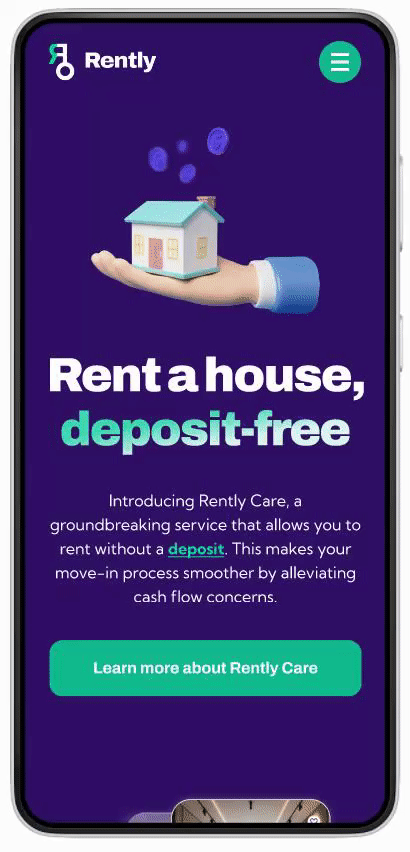
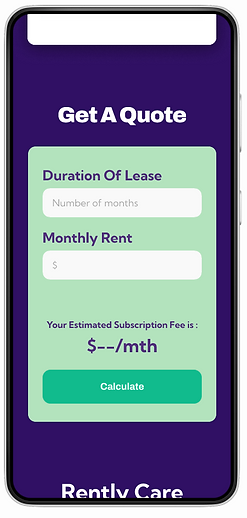
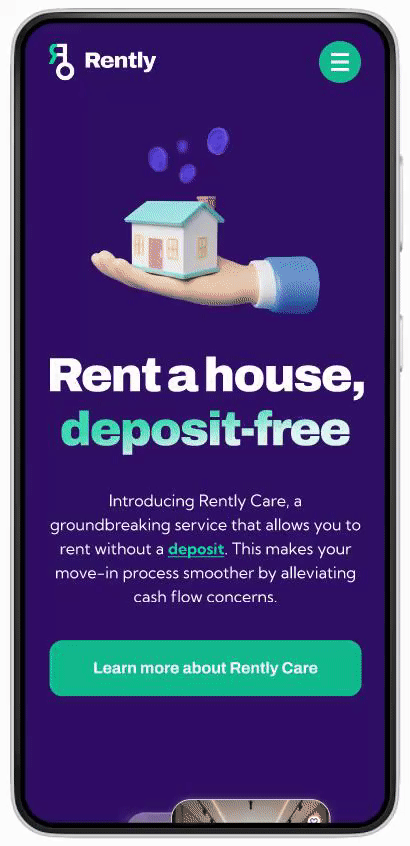

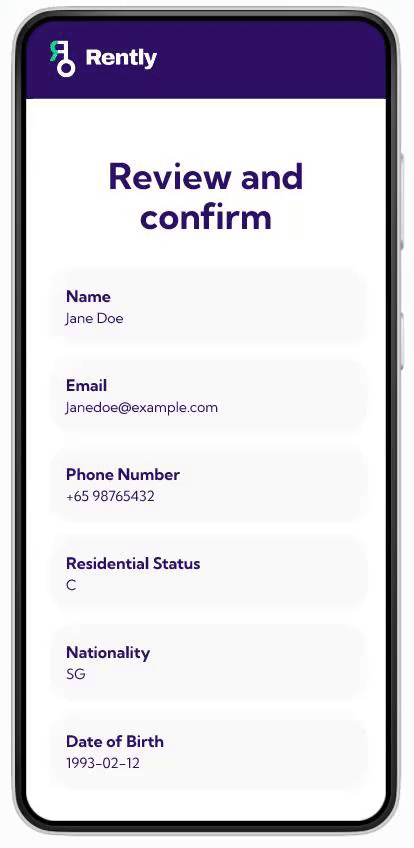
Testing
Putting our product to the (usability) test
To determine if our proposed design successfully met user needs and encouraged users to sign up with Rently, we conducted a second round of usability testing. We created a usability test plan, set up 2 scenarios and test objectives based on our personas' problem statements, and determined methodology of testing and metrics by which to judge test results.
Overall Findings
6 out of 6
participants successfully completed all tasks
Average SUS Score
85
4 out of 6
participants reported feeling positively towards Rently
The Glows
6 out of 6 participants...
...understood that the Rently Care monthly subscription is a fee paid to Rently, in exchange for services rendered. This was a huge improvement from our usability test with the current product, where only 1 out of 6 participants understood what the Rently Care subscription was paying for.
4 out of 6 participants...
...clicked on the informational popups without prompting, and found the explanation of jargon provided to be helpful.
5 out of 6 participants...
...used the subscription calculator without being prompted, and appreciated being able to receive an estimated cost easily.
5 out of 6 participants...
...appreciated the journey map, finding it valuable as a guide during their rental experience.
The Grows — and design iterations
Next Steps
As our project had a deadline of 3 weeks from when we started, unfortunately we couldn’t develop all the design changes we'd come up with. Given an opportunity to continue working on this, we would work on the following features to further improve the Rently onboarding experience.

Create more in-depth privacy policy detailing how users' information is collected, stored, and disposed of

Continue building trust with users through social proofing and marketing

Develop virtual assistant/AI chatbot to quickly answer specific customer questions
Conclusion
Over the course of this project, we identified tenant needs and goals and found that Rently Care as a service directly targets one of tenants' biggest needs—to feel safe and not at risk of being taken advantage of by landlords and agents. However, users were having difficulty understanding the benefits of Rently Care, due to the unclear presentation of content on the current product. We let our learnings from user research and competitive analysis inform our design, then tested our product and iterated to further improve it. We are confident our final product communicates Rently's services more clearly and accurately to users, and in turn, improves the overall user experience and will lead to an increase in Rently's user acquisition rate. Here is a quote from Emeric Martin, Rently's co-founder, upon the conclusion of our project:
"
With great communication skills and impressive presentation, Carmen kept us updated and involved all throughout the project. Her work provided us with ideas that we already started implementing.
-Emeric Martin, Rently co-founder
"
We are so psyched that several of our design suggestions are already in implementation! This client project was a thrilling conclusion to our UX bootcamp journey. The Rently team was incredibly warm and supportive, actively engaging with our project and generously lending us their time and resources. Transitioning from hypothetical scenarios to working with a real, existing, product was also very thrilling and eye-opening. Despite its challenges, the experience was ultimately rewarding and enjoyable! I feel very blessed to have gotten this opportunity. We wish Rently the best and hope that their user acquisition rate will soar higher and higher!
